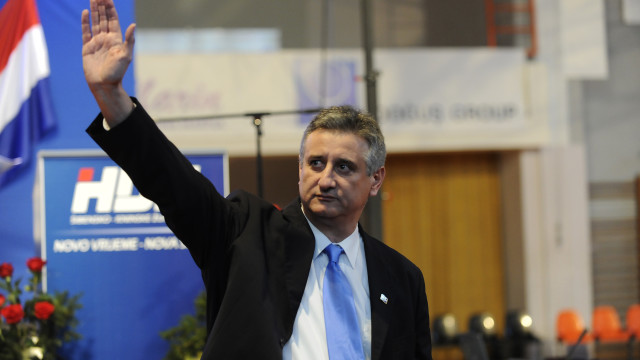
The Croatian political scene has been very lively since the last parliamentary elections held on 8th November 2015. The results of the election left both major centrist parties unable to form a majority government as the nominally left-of-centre coalition led by the Social Democratic Party (SDP) won 56 seats, while the nominally right-of-centre coalition led by the Croatian Democratic Union (CDU) won 59 seats in a 151-seat parliament. The biggest winner of the election was a new party called Bridge (“Most” in Croatian), which won 19 seats and was thus the decisive factor in the formation of the new government, depending on which of the two major parties it chose to form a coalition with.
Although Bridge had vowed before the elections not to form coalitions with any of the two major parties and had even made a show for the media by signing an “official declaration” about it, it was clear from the start that this promise was going to be broken: the negotiations lasted for two months, during which Bridge went to and fro, declaring its allegiance to SDP one day, and CDU the next. Bridge also suffered two internal clashes during this process, losing 4 of the 19 seats to dissidents, but decided to go with CDU in the end, thus finally forming a new conservative government around mid-January 2016.
The voters in search for an alternative
Bridge’s success resulted from the fact that Croatian voters have been looking for an alternative to the two dominant centrist parties for several years now. This always unfolded the same way, though, and ended up tragically: whether it was the Croatian Independent Liberal Party (HSLS), the Labour Party or the green party called ORAH (meaning “walnut” in Croatian). The high rankings in the polls would last only for several months, just enough time for the voters to realize that the new parties did not in fact offer anything radically different to the two dominant parties.
None of the parties stayed on the scene long enough to see any significant electoral success since by the time the election dates came their poll rankings would mostly plummet. The difference with Bridge was that it reached the peak of its popularity precisely before the parliamentary elections and there was not enough time for the voters to see through Bridge’s promises of an alternative political model.
Bridge was formed in 2012 and achieved its first success as a minor local party in the town of Metković in 2013, where they won the majority in the town council. The party based its propaganda precisely on opposing the corruption of both CDU and SDP, and bringing completely new and young faces to the political scene, “unblemished” by any links to the two major national parties. The leader of the party, Božo Petrov, became mayor of Metković, a small Adriatic town, and implemented policy changes that caught the eye of the wider public, which quickly proclaimed him one of the most successful mayors in the region.
Petrov lowered the debt of the town from around €2.5 million to €1.5 million in 7 months, by making his deputies work as volunteers and lowering the bonuses of city hall officials to 1 kuna (€0.15), as well as lowering the overall spending of political institutions in the town. This rang well with the public, as one of the most popular interpretations pushed by the liberal media is that we still do not have “true” capitalism and/or that Croatia’s problem is to be found in the corrupt and incapable politicians, not the system itself. Seen as a pioneer of cutting ineffective public costs and a fighter against party corruption, Petrov quickly rose in the polls with his party, reaching around 12% just in time for the parliamentary election.
The technocratic dream
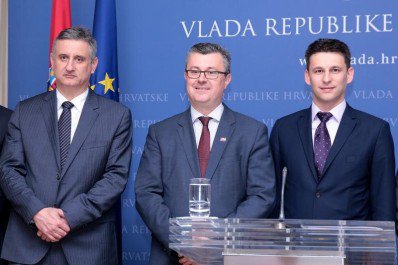
Already during the negotiation process after the election, however, Bridge’s popularity started declining, as its voters had no voice in deciding who the party will form a coalition with, or if it should do so at all. One of the results of the formation of the government was in this sense quite symbolic: Tihomir Orešković, a Croatian-Canadian entrepreneur, became prime minister. Orešković is more of a Canadian than a Croatian, which was made blatantly evident in the now widely ridiculed lapsus linguae in Orešković’s Croatian (English is his first language, as he spent most of his life in Canada).
Orešković was not (and is not) a member of any Croatian political party and, effectively, did not receive a single vote in the election. He was, however, chosen by the CDU-Bridge coalition precisely on this basis, as he was depicted, in the usual technocratic sense, as an “independent expert,” who is not a part of the Croatian dual partitocracy (non-partisan expertise being the main agenda of Bridge). But he is neither independent, nor an expert on government.
Leaving aside the fact that his room for manoeuvre is strongly defined by the CDU-Bridge coalition (where the CDU, led by Tomislav Karamarko, has a stronger hand), Orešković was CEO of the Croatian pharmaceutical company Pliva, privatised in 2008 by Teva Pharmaceuticals, an Israeli-American company, where Orešković began his career. Orešković thus has no political expertise whatsoever, but it was precisely his “entrepreneurial skills” which made him “ideal” for the job, as some of the most common tropes used by Croatian mainstream media (and politicians) are that we are “lacking in entrepreneurial spirit” or that the government is not stimulating an “entrepreneurial climate”.
“Keep calm and govern on”
However, the Croatian dream of technocratic governance falls apart precisely when it is time to govern. As PM Orešković himself said shortly after starting his term: “keep calm and govern on” (which he then tried to translate to Croatian, and failed horribly). In other words, nothing changes, things continue as they were. And that indeed is the case: after the first set of “reforms” were announced, it was clear that, when it comes to economic policies, the new CDU-Bridge coalition did not have anything new in store compared to the previous SDP-led government. The “reforms” were essentially instructions from the European Commission, which boil down to the usual neoliberal programme: cutting wages, increasing working hours, new privatisations, implementing new taxes for individual consumers (i.e. the middle and lower classes) while cutting taxes for corporations, etc.
Of course, the EU “instructions” would have been the same regardless of who formed the government and who was PM. And not long after it was made known what the “reforms” were, an announcement of privatisation plans followed, with a list of 52 state-owned companies to be evaluated for privatisation. Some of these are: Croatian freeways, Croatian mail, all airports, Croatian forests, Croatian water, the Croatian ferry company Jadrolinija, all companies associated with Croatian railways, the ship-building company 3. Maj, and so on and so forth.
The reasoning behind these privatisations is that foreign investment will not only bring a much needed influx of quick cash in order to lower state budget deficits but also that privatisations would make the companies more efficient long-term, attracting even more investment in technological development and overall competitiveness on the international market. What happens instead is that the new private owners are content with keeping the newly bought companies at their current levels of development and profitability and with simply taking all the resulting profits (which are the profits that the state then loses). This is precisely what happened with the aforementioned Pliva, as its new owner, Teva Pharmaceuticals, sacked Pliva’s entire research department and basically turned the company into a regional producer and distributor of pharmaceutical products, with no intent to invest much into research or new product development.
The upsurge of state-backed fascism
What caused even more of a stir, though, was CDU’s acting on their nationalist threats and strong anti-communist rhetoric. Although there was always a strong right-wing presence in Croatia – a legacy of the war in the Balkans in the 1990s and of Franjo Tuđman’s 10-year autocratic reign, where “communism” was identified with Serbian aggression and everything non-Croatian – there has been a palpable upsurge of right-wing sentiments in Croatia at least since 2013, when the homophobic initiative “In the Name of Family” called for a referendum which would constitutionally define marriage as a union between a man and a woman. The referendum was successful, and ever since, there was an increase of radical right-wing sentiments being heard in the public discourse: targeting either Serbs (the arch-nemesis for any fascist Croat), gays, antifascists or “communists,” who, in reality, do not exist on the Croatian mainstream political scene; for the average right-wing mind, a “communist” is anyone who does not share their views.
In this period, the right wing became better organized and more vocal. Even explicitly fascist statements, often referring to the Croatian Second-World-War-era Nazi-puppet state, the Independent State of Croatia, were increasingly tolerated. The only exceptions to this lack of criticism from mainstream politicians were cases when these acts caught the eye of the European public, for example when a huge swastika appeared on the grass of the Poljud football stadium in Split during an international live broadcast. The CDU recognised this and upped the rhetorical ante. This was particularly evident in the public appearances of Tomislav Karamarko, the president of the CDU, who enthusiastically promised a “re-Tuđmanisation” of Croatian society and the cleansing of Croatia from all the “remnants of Communism,” which survived the fall of Yugoslavia, if CDU won the parliamentary election.
This announcement was realized in the form of several cabinet ministers after the government was formed in January. For example, the Minister of Education, Science and Sports was revealed to be a firm believer in creationism, claiming in a paper previously published in Croatia that science has not sufficiently “proven” evolution yet and that the question of the formation of the world was still open, divine creation still being a plausible option. But perhaps the most controversial minister is Zlatko Hasanbegović, who was appointed as the Minister of Culture. It was discovered that Hasanbegović wrote fascist texts in a right-wing journal in the 90s as a student, and photos of him wearing a hat with the Croatian-fascist “U”, i.e. claiming loyalty to the Croatian WWII-era fascists called “Ustaše”, were found. After the discovery, he basically claimed that he had changed his ways since then, made a couple of media stunts posing as an opponent of fascism (such as giving a speech on the suffering of the Roma people in Croatian concentration camps during the Ustaše regime), and politically survived the drama.
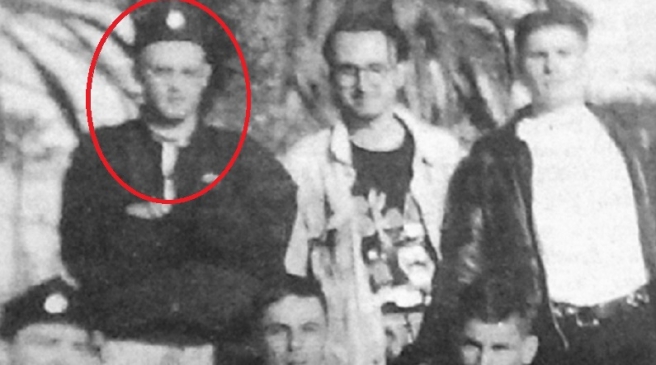
State-led censorship of media and culture
Meanwhile, his Ministry of Culture completely cut off funding to all independent non-profit media, which were mostly leftist and funded primarily or even exclusively through the Ministry of Culture. It dissolved several committees whose responsibility was evaluating the work of media and whose final reports were crucial in allocating funds, in an obvious plan to “cleanse” that part of the state apparatus of any potential disobedient elements. The same was done with the state-owned national television, where a new conservative clique was put in place. Health and retirement insurance benefits for independent artists were cut by 30%, leaving over 1000 artists in financial difficulties. These measures resulted in public outrage of several thousand cultural workers, who managed to collect 4000 signatures asking for the Minister’s resignation. No such thing happened yet, and Hasanbegović’s position is still secure.
The primary effects of these measures are, firstly, indirect control over the media (i.e. pretty direct when it comes to the national television) by weakening independent media or forcing them to completely shut down for lack of any financial resources. Secondly, firm state control over cultural production, as cultural workers are forced either to comply with the right-wing ideological and political values of the current government or they are left to fight for themselves in the free market, where cultural labour encounters a different, but equally strong (if not stronger), set of external and systemic limitations. Indeed, we might summarily describe it as hegemonizing cultural and ideological production and it is already evident that right-wing sentiments, fascism and xenophobia are the only positions which can flourish in this environment (if not met with significant resistance and political alternatives).
The family and the church as the new (old) backbones of society
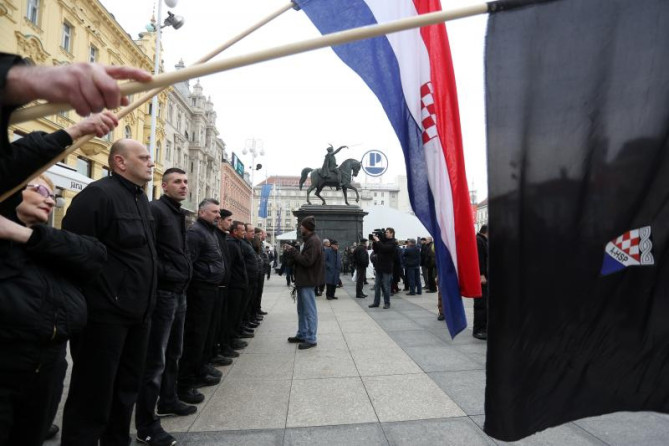
However, this is not the sole reason fascism, whether implicit or explicit, is on the rise in Croatia. As is currently the case in many other states in Europe, this is in good part a consequence of the dissolution of the welfare state. Combined with the specific conjunction of the European periphery, which Croatia is part of, the global economic crisis, and the aforementioned fascist legacy, this creates an extremely fertile ground for fascism. What this means concretely is that, in Croatia, the role the state institutions had by offering some security and support in the realms of healthcare, education, social reproduction and culture has been taken over by inherently traditional and conservative social institutions, such as the family or the church.
The Catholic Church in particular is extremely strong in Croatia, representing one of the biggest social networks for keeping the poor, uneducated and disempowered in a state of ideological and political backwardness, and, when necessary, for mobilising these masses for conservative goals. For example, this was the case before the referendum on the definition of marriage, where the Church proved to be one of the main logistical, financial and ideological supports by which the “yes” vote was secured.
A recent survey by Eurostat found that the costs of labour power in Croatia are amongst the lowest in the European Union (at €9.6 per hour, the EU average being €25), but this will not prevent the further demolishing of the welfare state: for example, a further step towards privatizing the public healthcare system has recently been announced, while kindergarten workers recently protested against the horrific working conditions in these Croatian pre-school institutions, where a single nanny often takes care of 25-30 children. If such policies continue (and they will as long as the centrist parties rule), it seems highly likely that Croatia will live to see a similar fate to that of today’s Greece. The CDU-Bridge coalition is quite fragile and shows signs of internal feuds often enough, but even if this instability results in a fall of government, nothing would change as far as economic policies are concerned (which are, as was mentioned, a matter of the EU-IMF diktat).
Most recent events
Just recently, the Bridge-CDU coalition fell apart because of a corruption scandal involving Tomislav Karamarko’s wife, Ana Karamarko, receiving €60 000 from the Hungarian oil-industry company MOL for consulting services. MOL is one of the two major shareholders of Ina (the other being the Croatian state), a Croatian oil company, since it bought 25% of the shares in 2003 and an additional 22.15% in 2008. It is the transaction in 2008 and some other events that followed it which are still pending legal investigation and because of which one of the former Croatian prime ministers, Ivo Sanader, is in jail, accused for corruption, allegedly receiving up to €10 million from MOL in order to secure a dominant position of the company in Ina.
Since the investigation is still ongoing, a transaction from MOL to Ana Karamarko’s consulting company raised accusations of conflicts of interest, since Tomislav Karamarko is the current deputy PM, and his party is currently in power thanks to the Bridge-CDU coalition. Bridge called for Karamarko to resign, which Karamarko, as of yet, refused to do, and the Croatian government thus practically collapsed, as it lost the support of the majority in the Croatian parliament. PM Orešković tried to reconcile the two sides, but failed, and now also faces disappearing from the political scene. Since Bridge declared (again) that it will not form a coalition neither with CDU nor with SDP, Croatia is likely facing new elections. However, Bridge lost a lot of its voters, falling down to 6% according to latest polls.
Croatia also witnessed one of the biggest demonstrations in its recent history, where over 40 000 people have gathered to protest against a right wing sabotage of the education reform started a few years ago. With the support of the current (and crumbling) government, there was an attempt to introduce right wing and religious radicals into the committee responsible for the reform. The protest was thus not only in support of the reform, but also, and probably even more so, a protest for a secular society and against religious doctrine and conservative social values; effectively, it was a protest against the current government. Although the education reform does have some other faults (such as orienting itself towards the market as the determining factor over the purpose and structure of the educational system), and although the organizers of the protest were extremely incompetent (not only because they labelled the protest “apolitical” in the typical liberal-technocratic narrative we described earlier, but also because they completely failed to channel the much wider political frustrations of the masses), this did show that there is potential for progressive and leftist political forces to start developing.
Where is the Left?
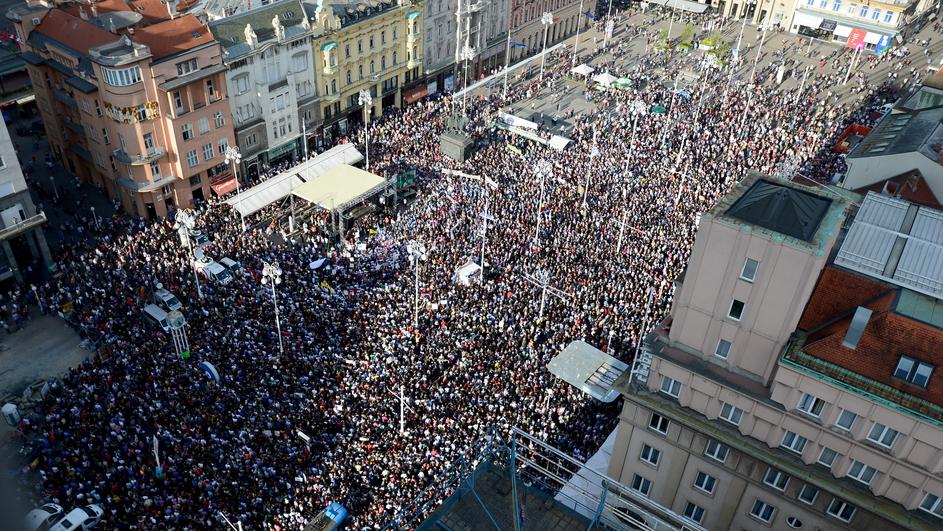
Meanwhile, the Croatian Left is still very young. Some of the most prominent groups are the recently formed Workers’ Front, a democratic-socialist political party, which devoted itself almost exclusively to political agitation, and an NGO called the Base for Labor Initiatives and Democratization (BLID), which focuses primarily on “field work”, such as working with unions and educating workers. Other more or less notable groups exist as well (such as the quite active Network of Zagreb Antifascists), but it is not necessary to go into further detail for the purpose of this text.
The first group – the Workers’ Front – received 1293 votes on the parliamentary elections in November 2015 according to official results, revealing that the strategy of relying primarily on strong anticapitalist Facebook slogans and banners in front of villas of the Croatian elite or occasional social protests was, unsurprisingly, not that efficient. Granted, the group is still rather young, but it is not showing signs of progress, and it already went through its first internal split (the expelled group now also planning to form its own party). While BLID is doing some significant work in politicizing unions to some extent, it seems to lack the will to move in the direction of political organisation.
It is somewhat common for leftist groups to suffer from a certain amount of exclusivity (BLID perhaps being an exception), which leaves a significant amount of potential, in the form of people who are not members of these groups, untapped. Likewise, and perhaps more importantly, there are no broad and open discussions within the Left on its own social position and political activity, without which one of the primary driving mechanisms of arguably any progressive social force – self-reflection and self-criticism – are fundamentally lacking.
Since the Croatian voters have continually been trying to find an alternative to the two main centrist parties and their policies for several years now, becoming justifiably disappointed with their choice the moment they put some trust in these parties (be it just in polls or after elections, as was the case with Bridge), it seems that there is room within the political field for a true leftist alternative – room which the Workers’ Front has tried, but failed to fill.
If the Croatian Left is to have any chance of becoming that alternative, it should initiate wide discussions on its own position and trajectory and become more inclusive towards friendly-minded outsiders. Finding common ground should not be that difficult – one potential starting point is definitely antifascism, with a strong accent on its socialist roots in the Second World War Yugoslav partisan movement (unlike the liberal versions of antifascism in the region, which try to deny or distance themselves from these roots), which is something all the leftist groups share.
That is the ground on which new experiences could be created, which would transcend the narrow, fragmented and partial experiences of the various individual groups, and which could then be unified in a more coherent understanding of the social and political conjuncture. Otherwise, by clinging to the same type of activity and old habits, the only thing that can be achieved is a perpetuation of the same type of experience and, effectively, the same, and by definition limited, understanding of society.
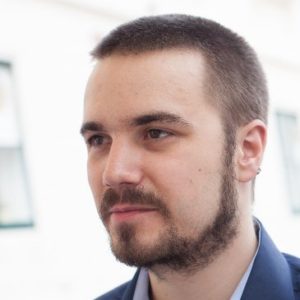


One reply on “Bridging the Gap Between Technocracy and Fascism in Croatia”
Opet ovi istočnjaci seru o Hrvatskoj.